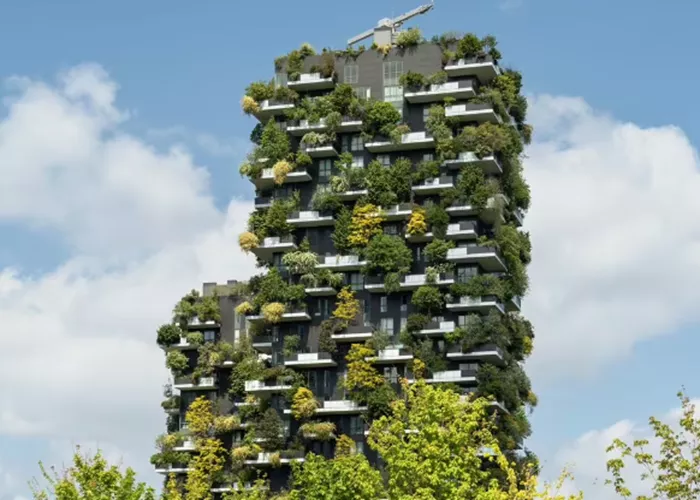In 2014, Milan’s Bosco Verticale (Vertical Forest) was unveiled in northern Italy, setting a new standard in sustainable architecture. Ten years later, the complex of two towering skyscrapers continues to draw international attention for its unique design, featuring more than 2,000 plant species on its facades.
The Bosco Verticale, located in the heart of Milan, includes two skyscrapers standing 80 and 112 meters tall. The buildings are home to around 800 trees, 15,000 perennial plants, and 5,000 shrubs, making up a “forest” that spans 20,000 square meters—roughly the size of a small park—within an urban area of just 1,500 square meters.
Designed by architect Stefano Boeri and his team at Boeri Studio, the project was conceived as a solution to urban sprawl, aiming to create a microclimate that improves air quality and acts as a natural barrier against noise and solar radiation. Boeri came up with the idea during a visit to Dubai, where he noticed the overwhelming presence of glass and metal skyscrapers in a “mineral city,” devoid of greenery.
The Bosco Verticale’s green facade is not just visually striking—it has a functional purpose. The plant coverage helps regulate humidity, produce oxygen, and absorb CO2 and airborne pollutants. The building’s “green curtain” offers an alternative to traditional glass or stone facades, filtering sunlight rather than reflecting it, which helps maintain a comfortable internal climate while minimizing environmental impact.
In addition to its environmental benefits, the Bosco Verticale has become a tourist attraction, drawing visitors from around the world to admire its vertical garden. While the apartments within the towers remain private, the building’s exterior can be viewed from surrounding streets and parks, making it a standout feature in Milan’s skyline.
As one of the first major projects to blend urban living with nature, the Bosco Verticale remains a pioneering example of how architecture can merge sustainability with urban development. Ten years on, it continues to inspire cities around the globe in their efforts to build greener, more livable environments.
Related topics:
- IU Club Champions Native Plants on Campus to Combat Climate Change
- Plants Use Clever Strategies to Balance Growth and Defense
- NMSU Researcher Leads Team in Battle Against Invasive Plants


